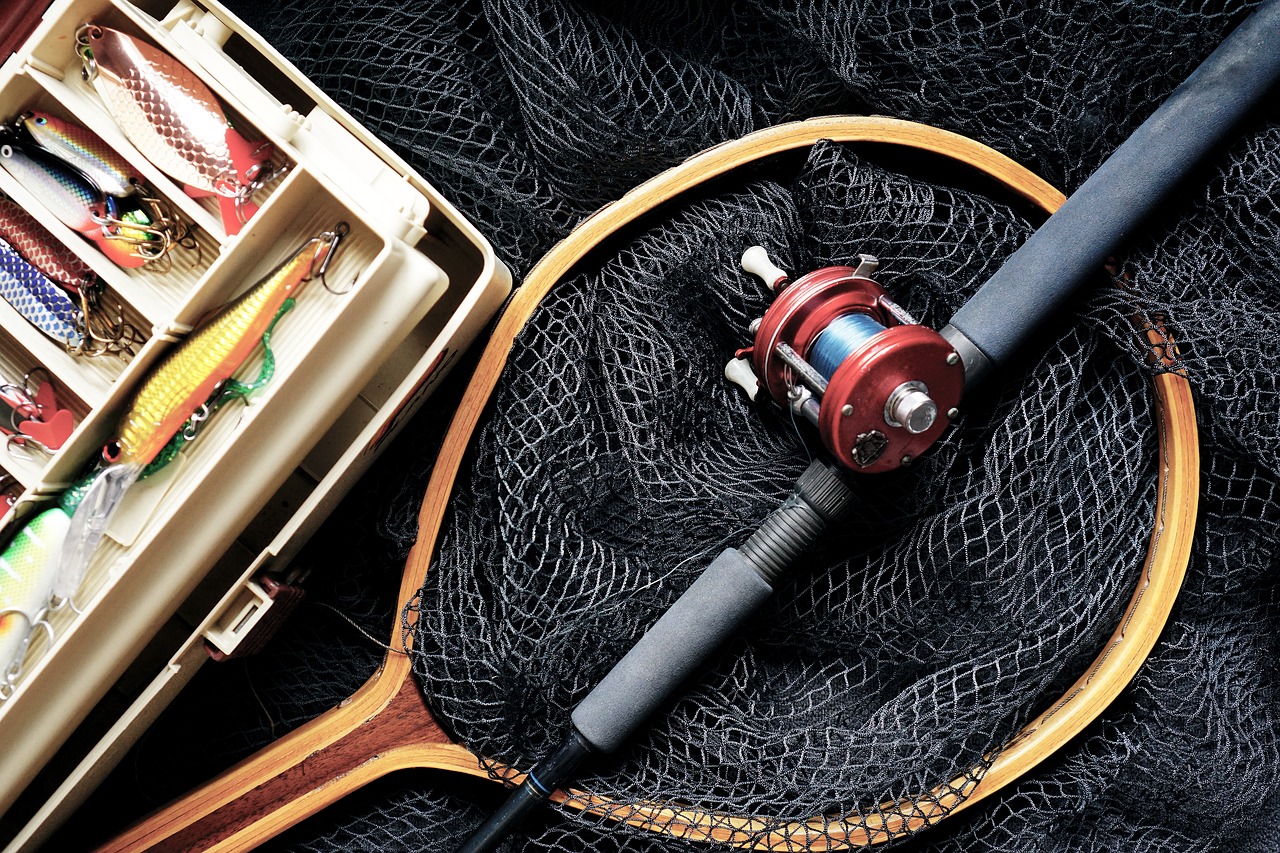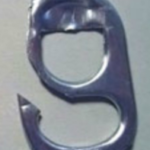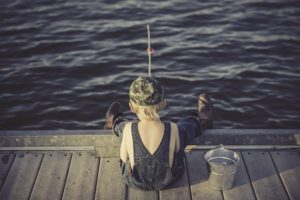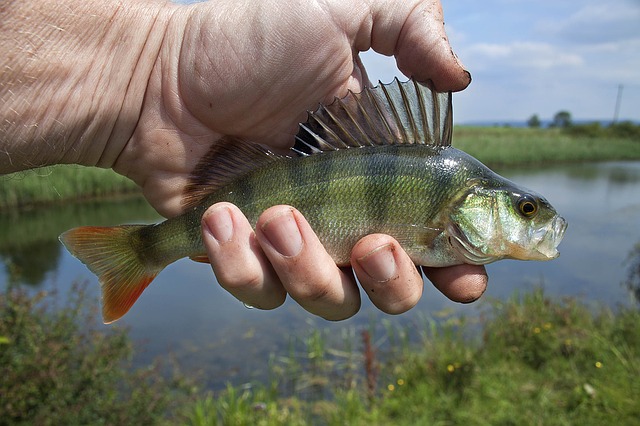
For some (mainly the south) spring has already arrived. That means it’s time to get outside and get fishing!
If you would like to enjoy fishing but think that you need a boat and expensive gear, you don’t. We’re focusing on information and gear for the beginner or thrifty shore fisherman in Spring Fishing Tips and Gear (Part 1).
With that said, to celebrate the arrival of spring fishing, let’s get started!
The Essentials
There are very few essentials needed to begin fishing. Even if you’ve never owned a single piece of fishing gear.
Essential 1: A Fishing License
In all states, a fishing license is required to fish public waters. Some regulations, restrictions, and exceptions will vary state-to-state but through my research there is some form of licensing or permitting necessary for all 50 states. A quick google search should tell you everything you need to know about your state. Private ponds and lakes typically do not have these restrictions but you should verify the regulations in your state.
However, many states have programs to allow people to fish without a license in special circumstances. One is if a child is ‘underage’ they may be able to fish without a license on public waters. Also in Texas, there is a program which allows people to fish from shore at state parks without a license. Of course you have to pay to enter the park so it’s not technically ‘free’ fishing. Other states may have similar programs but fishing licenses aren’t typically cost prohibitive. California’s is expectedly the most expensive. States with coasts also typically have separate licenses for fresh / saltwater fishing. Non-resident licenses are typically a higher purchase cost as well.
Essential 2: Line, hook, and bait
You really don’t need much in order to catch a fish. For many, fancy fishing gear makes fishing easier, more fun, or just fills an internal desire to buy stuff at the sporting goods store.
To catch a fish there are just 3 essentials. Line, hook, and bait. All of which can be rummaged from around your home easily. Any small string that is strong enough to hold the strain from a fighting fish can work. And there are many ways to improvise a hook. For instance a simple stick sharpened on both ends is likely the first ‘fishing hook’ ever used.
You can read more about the first fish hook at Field & Stream: Survival Fishing: How to Make a Gorge Hook

Soda Tab Fish Hook
Other improvised – or primitive – fish hooks can be made from carved pieces of bone, wood, and even soda can tabs. With today’s amount of modern metal trash it should be quite simple to improvise a decent fish hook … look for things like a safety pin or piece of strong wire. If you’re not facing down a survival situation modern storebought fishing hooks are always better.
The same goes for bait. Nothing fancy needed. If you wish, you can simply collect insects and worms direct from nature for bait. Also the use of smaller – easier to catch – bait fish to catch larger fish is a practice from the dawn of mankind. It’s hard to beat the real thing when it comes to catching fish. Lures and artificial baits are more ‘fun’ than fishing for survival or sustenance.
Essential Three: The Important Miscellaneous
These essentials may be considered non-essential by some … if they aren’t to you they should be on your priority list! These items are not directly used to ‘catch’ fish, but they make the job a whole lot easier … and maybe even a little safer.
- First aid kit with snake bite kit.
- Needle nose, or fishing pliers (for removing hooks from fish or maybe even yourself). Make sure whatever pliers you choose have wire cutters for cutting the barbs off of hooks.
- Sunscreen! Don’t forget to apply inside the nostrils because UV rays can reflect off the water. A sunburn in the nose is no fun.
- Nail clippers make the best line cutters. You don’t have any exposed blades like you would with a knife. You’ll need to trim line after you tie on hooks or lures, or if you have to cut your line because of a snagged line.
- Last on the list would be a fishing guide for your state. You’ll want to know the regulations on what you catch in case you want to keep to eat. It’ll also help you identify the common fish in those waters.
Now that you have the essentials down you may want to check out some good beginner gear. After that we’ll get into catching the fish!
How to Catch Fish
Fishing can be a lot of ‘hurry-up-and-wait’. When people try fishing and don’t enjoy it the cause is typically boredom. If you aren’t happy spending any time with the thoughts in your own head and need constant distraction … fishing may not be easy for you. But if you can find your ‘zen’ then fishing is a great way to relax, enjoy nature, and reflect on life.
1. Find a place to fish
Once you have the basic gear and requisite license the next step to catching a fish is finding a body of water in which to fish. If you live in the desert this may be a challenge. Most rivers along with state and municipal lakes provide open access to the public for fishing. A quick google search should let you know what public fishing opportunities are available near you.
Another great fishing opportunity to learn to fish is finding a friend or family member with a fishing pond. Pond fishing is quite popular here in N. Texas as many are ‘stocked’ with prime fish species for the very purpose of fun family fishing. Many ponds are on private property so make sure you have the proper permission to be fishing there.

2. Learn the species of fish and techniques that work in your local waters
To catch fish it helps to know what kind of fish you’re fishing for. While all fish may swim, many fish species have different behavior patterns and food/bait preferences. Most fish can be considered as opportunistic … they’ll eat just about anything they’re given an opportunity too. I’d call they’re eating behaviour very similar to chickens.
But there are differences in the baits, lures, and most importantly techniques that are most effective for what you’re trying to catch. For example Crappie is a small game fish that is considered excellent eating. But most of the people I know only crappie fish during the spring spawn because they’re close to shore and really easy to catch then. Just about any small bait you put in the water can catch a crappie then. But crappie can be successfully caught year round if you learn the proper techniques.
Do a little research and find out what works in your waters for what you want to catch. There is sooooo much info online tailored to every popular fishing region. For example, I couldn’t tell you the first thing about Pike fishing because the opportunities aren’t present where I live.
3. Get the ‘inside-scoop’
When out fishing occasionally try to make small talk with people who look like they know what they are doing. Fisherman may seem gruff sometimes but the large majority are overly-friendly and just LOVE to tell their fishing stories. Don’t try to pry out secret fishing spots however. Those are sometimes guarded deep inside the fisherman’s minds and are highly prized secrets. Instead maybe ‘fish’ around for some tidbits of advice like what bait is working for them and what depth of water the fish are hanging out in. Once they get to talking … sometimes they tell you the perfect spot to fish.

But, remember to take advice and stories with a grain of salt. What they say works like a charm could be total B.S. Fishermen are known for exaggerating their catches and ability habitually. Collect advice from multiple sources and experiment to see what locations / techniques work best for you.
4. Experiment with baits
Like all predators … effective predation can be achieved by thinking like the prey. A fish wants to eat everyday just like you and I. You just have to find what they’re hungry for. One of the best ways to do this is to experiment with your bait and techniques based off of what you’d guess the fish want.
Learn what type of food sources are available to the fish that time of year. Small prey fish are always good bait, and lures that imitate small baitfish can be very effective. Especially if you see the bait fish in the water agitated by other fish chasing and feeding on them. Then it might be a good time to throw that bait out there.
For example, in the south a great bait for largemouth bass imitate crawfish (A.K.A. Mudbugs). But the best time to use these baits is when fish are used to feeding on this food source. In the spring the crawfish comes out to find suitable mates which makes them an easier target than usual. If the bass are used to them as a food source then they are more apt to take your crawfish lure at these times.
If one bait isn’t working on any given day … mix it up and try something different.
Are you ready to go fishing yet?
I don’t know about you but I’m ready to go fishing!
The sport of fishing is gaining popularity. According to CNS news between 2006 and 2011 the number of people fishing increased by 11 percent!
I’ve had periods in my life where I got into fishing. Lately it’s been gaining ground as one of my primary interests. If you’re looking for a fun and affordable hobby that gets you outdoors fishing is likely the way to go. It’s much easier to get into than hunting and unlike hunting you can catch and release.
Please come back next week when we release Spring Fishing Tips and Gear (Part 2). We’ll go over more advanced fishing topics and we’ll even reveal the fastest way to learn how to catch fish like the pros!
Until next week here are a couple more fishing resources for your reading pleasure.

